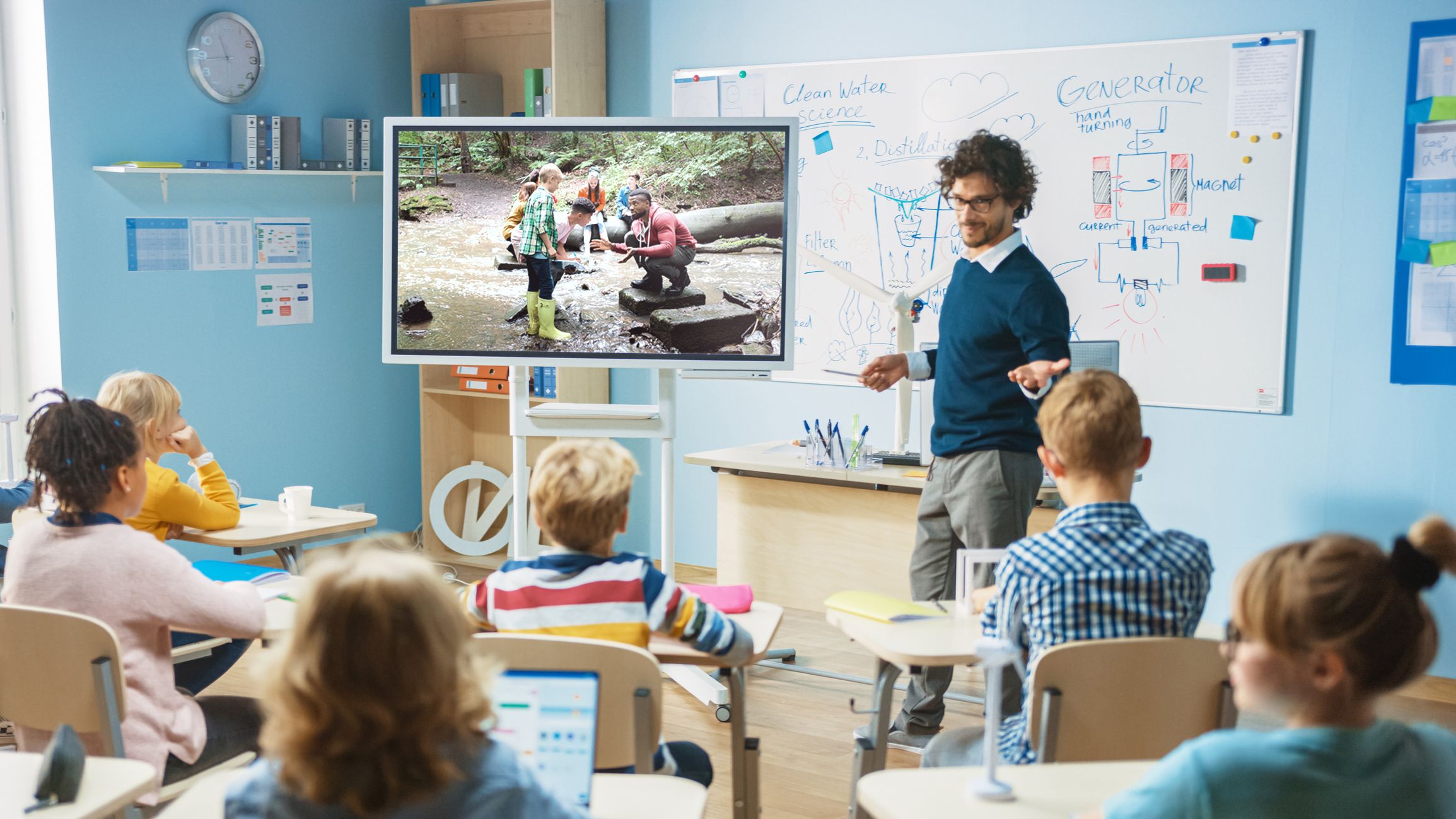
Remember the days when field trips were a “really big deal”? Planning with the chosen site, endless collection of permission slips, coordination of chaperones, a lost day of instruction, and the stress of taking large groups of students off campus?
Well, times have changed. Thanks to technology, amazing virtual field trips are now plentiful – and without the headaches and hassles. For teachers, they make a perfect addition to your curriculum. Virtual field trips can take students to just about anywhere in the world for a few minutes to a few hours. They can be a great change-of-pace for students who find a subject difficult, complex (or boring). Best of all, virtual field trips can be taken much more frequently during the school year without the massive interruption to regular instruction.
Setting Up an Effective Virtual Field Trip
To get the most out of a virtual field trip, you’ll want to do some planning. First, and most importantly, choose a trip that will support the subject matter you are teaching. Think about what you want the students to learn, and keep that overarching goal in your mind as you explore your options. Because there are so many amazing opportunities available, it’s easy to get pulled off track to cool-but-not-academically-helpful options.
Next, consider the technology your school has available; the age, ability and attention span of your students; and the ideal structure for the field trip itself. As you search for options, you’ll find many simple ones based on video recordings or live web cam views. Others may have student activities to complete as a class or in small groups. Some may require interactive technology like an interactive display or a virtual reality headset for games and activities. Finally, there may be opportunities to meet with a live expert so students can ask questions.
Even if you have very limited technology capabilities, you can create an engaging virtual field trip that can support your subject matter in new and interesting ways.
Early Learners Thrive on Variety
As teachers know, young learners have very short attention spans and lots of energy. When planning a virtual field trip for preschool or kindergarten students, it’s important to select age-appropriate material as well as to vary the related activities surrounding the virtual field trip.
Thousands of virtual field trips of zoos, aquariums, and national parks exist. Instead of spending several hours on a virtual tour one day, it can be a good idea to break up a virtual field trip over the course of a week. For example, you might introduce students to a different animal each day, incorporate a 15- or 20-minute virtual field trip about that specific animal, and then plan crafts or physical activities surrounding the same theme for the remainder of the class.
Elementary Students Ready for Interactive Tours
As students get older, they will not only be able to pay attention longer, but they will begin developing the capabilities to do the hands-on, interactive options offered as part of many virtual field trips.
The challenge is finding the right kind of virtual field trip that supports your lesson plans. For example, if you’re studying space, organizations like NASA and the Smithsonian offer free virtual field trips that include recorded materials and related activities. Learning about recycling? Take the kids on a virtual tour of how an actual recycling plant works to turn discarded material into new items. Incorporate a virtual field trip to a farm as you’re learning about nutrition and healthy eating. The possibilities are just about endless.
Diving Into Details for Middle Schoolers
By the time students are in middle school, they are ready for more complex subjects and are beginning to explore potential career options. Students will also be able to get more out of interactive games, related discussions and activities, and live discussions.
Some universities offer interesting virtual field trips in specific areas of study. For example, the Arizona State University School of Life Scientists offers several options as well as an opportunity to submit a written question to a biologist, which will be answered within 72 hours.
If you have the time to plan further ahead, you may also want to check out schedules for services like Skype a Scientist where live experts make themselves available on particular topics. By organizing your lesson plan around such live events, you can take advantage of such opportunities and plan other components of a virtual field trip around them.
A Doorway to the Real World for High School Students
Virtual field trips for high school students can bring to life particular books and areas of study in a unique and engaging way. In addition, students at this age are beginning to explore niche areas of study that they may want to pursue in higher education, at a trade school, or on the job market. Virtual field trips are a great way to introduce such topics to older students.
For example, if you’re studying the life of Anne Frank in literature, taking a virtual tour of her home can help students envision what is happening in the story itself. Short tours of well-known landmarks such as the Great Wall of China or the White House can add to a broader course of study.
Career-related virtual tours can be explored by students on an individual basis. The opportunities are vast. Tours of manufacturing and production facilities, hospital or surgery centers, laboratories, and more are readily available. However, the quality may vary so it’s important to take the time to find the perfect option for your high school students.
Conclusion
Virtual field trips are an excellent way to complement any area of study at any age. The most important consideration for teachers is to determine what they would like the students to learn and achieve from the virtual field trip and how it can support their overall curriculum goals.


